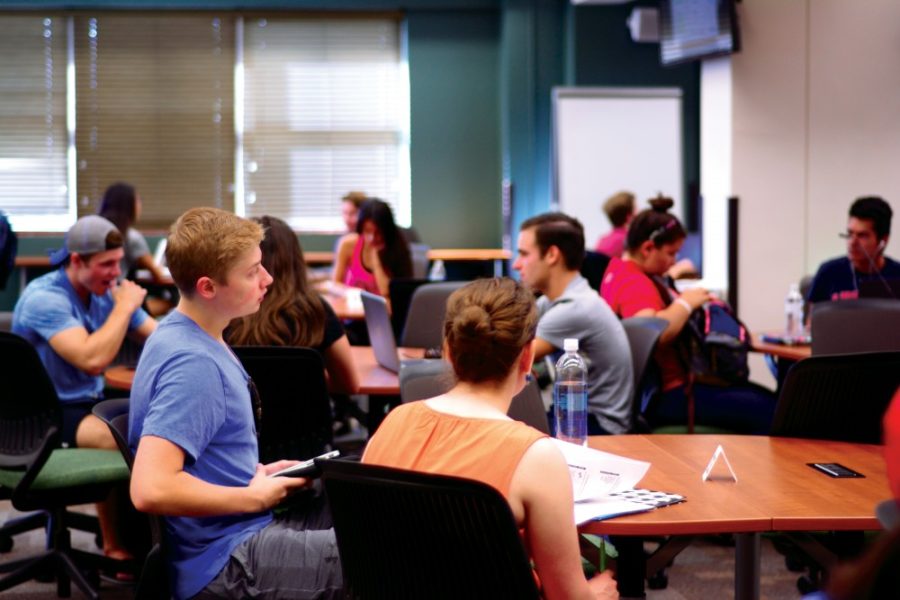Students taking assistant professor Dr. Zoe Cohen’s immunology course shuffle into their afternoon lecture in the same way as many of their fellow students. The only difference is that, instead of a cramped lecture hall, the immunology students are surrounded by multiple TV screens on all sides and are seated at round tables on the main floor of the Science-Engineering Library.
Beginning last academic year, instructors began to experiment with a collaborative learning model. Implementation of the model is the brainchild of Gail Burd, UA’s senior vice provost for academic affairs.
Naim Duran, a physiology senior, said, “I think it’s an interesting way to learn, and I enjoy being able to discuss and work out ideas with my classmates without worrying about missing information”.
The collaborative format began with chemistry and engineering courses. In the current academic year, instructors had the option to structure their courses to fit this scheme.
“I got an email asking for instructors who were interested in participating, and I was excited to try the format in order to create a better learning environment for students,” Cohen said.
Unlike in the past, the new format is being used for courses in the biological sciences.
“The unique thing is that we are adopting the format for a course that is not problem-based in the way that a course like general chemistry is,” Cohen said. “I can’t tell students to sit down and give them five minutes to solve cancer, but I can interact with my students and use questions and scenarios to engage next-level thought, and I have been pleased with the discussions that I hear from the students.”
Students are already adjusting to the different learning style that requires them to participate in small groups to answer questions. For students like Cale Grenillo-Weaver, a physiology senior, the class structure is something that he has been waiting for.
“I get to think about concepts instead of just sitting in a lecture hall and being expected to internalize facts like in most lectures, which is really helping me learn,” Grenillo-Weaver said.
Cohen, who said that she worked hard to revamp her immunology course, teaches at undergraduate and graduate levels. Cohen also teaches cardiology to undergraduate, graduate and medical students.
Cohen was intrigued with changing her class format based on published research on the subject, which states that students learn better when they are able to engage in discussion of concepts.
“I love that immunology is not formulaic and allows for students to learn to think critically,” Cohen said. “I am pleased when I hear students pose new ideas and solutions that even I may have not considered.”
Many students in the course are juniors and seniors who have not had a class taught in this format, but are finding it easy to contribute to the learning process.
“In the middle of a discussion about antigen recognition in the body, one student raised her hand and asked, ‘Since all cells have antigens, then isn’t every cell an immune cell?’ And I was like, ‘Wow,’ ” Cohen said.
Follow Samwel Ochieng on Twitter.









